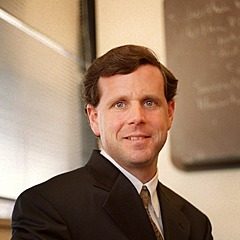The paper summarized here is part of the Spring 2023 edition of the Brookings Papers on Economic Activity (BPEA), the leading conference series and journal in economics for timely, cutting-edge research about real-world policy issues. The conference draft of this paper was presented at the Spring 2023 BPEA Conference (recordings and slides are available via the link). The final version was published in the Spring 2023 issue by Johns Hopkins University Press. Submit a proposal to present at a future BPEA conference here.
Download final paper with online appendix, discussion comments, and general discussion summary
Download data/programs for final paper and Deaton comment
The uniquely American approach to providing health insurance through employers is a little-recognized but important driver of increasing labor market inequality, suggests a paper discussed at the Brookings Papers on Economic Activity (BPEA) conference on March 31.
The authors—Amy Finkelstein of the Massachusetts Institute of Technology, Casey McQuillan and Owen Zidar of Princeton University, and Eric Zwick of the University of Chicago—use a stylized model of the labor market to compare the current system, in which about half of Americans are covered by employer-provided health insurance, to a hypothetical system in which health insurance is financed by a payroll tax, similar in spirit to the universal health insurance in countries such as Germany and Canada.
The model shows that, in 2019, under a payroll-tax financed system, employment of full-time workers without a college degree (ages 25 to 64) would have been nearly 500,000 greater, average annual earnings for those workers would have been about $1,700 higher, and the gap between the average earnings of college-educated workers (with a bachelor’s degree or higher) and workers without a college degree would have been 11% smaller.
“These calibrated labor market effects … are in the same ballpark as estimates of the impact of other leading drivers of labor market inequality” such as increased trade, outsourcing, use of robots, decreased unionization, and the declining inflation-adjusted minimum wage, according to the paper, The Health Wedge and Labor Market Inequality.
Employer-provided health insurance discourages the hiring of non-college educated workers because the per-worker cost is the same, regardless of how much a worker earns, and is thus proportionately higher for lower-paid workers. Average premiums were about $12,000 a year in 2019. That was about 25% of the average annual earnings (about $50,000) of a non-college educated worker but only about 12% of the average annual earnings of a college-educated worker (about $100,000), according to the paper.

Several leading economists have conjectured about the important influence of this “health wedge” on U.S. inequality but little work, until the paper presented at the BPEA conference, has quantified the impact.
And because health care spending as a share of U.S. gross domestic product has more than doubled from 1977 to 2019 (and the average health insurance premium has quadrupled in inflation-adjusted terms), the effect on inequality has increased significantly over the past four decades, according to the paper. Many other countries also experienced both an increase in health care spending and labor market inequality, but the increases have been larger in the United States, the paper says.

“Our analysis suggests that if the cost of health care in the United States continues its rapid rise over the coming years, labor market inequality will continue to grow in the absence of substantial reforms to how we finance health insurance in America,” the authors write.
The paper stops short of recommending switching to payroll tax financing. However, it notes that one step in that direction would be to modify the current tax system, which excludes employer contributions to health insurance from taxable income, thus effectively subsidizing private insurance by about $300 billion a year. Replacing this tax exclusion with a tax credit that phases out as income rises would move the system partway toward the benefits of payroll tax financing.
CITATION
Finkelstein, Amy, Casey McQuillan, Owen Zidar, and Eric Zwick. 2023. “The Health Wedge and Labor Market Inequality.” Brookings Papers on Economic Activity. Spring. 425-475.
Cutler, David. 2023. “Comment on ‘The Health Wedge and Labor Market Inequality’.” Brookings Papers on Economic Activity. Spring. 476-487.
Deaton, Angus. 2023. “Comment on ‘The Health Wedge and Labor Market Inequality’.” Brookings Papers on Economic Activity. Spring. 487-499.
Discussants

-
Acknowledgements and disclosures
This research was supported by the Laura and John Arnold Foundation. Owen Zidar was also supported by the National Science Foundation, grant number 1752431, and Eric Zwick was supported by the Fama Research Fund, Neubauer Family Foundation, the Polsky Center, and the Hultquist Faculty Research Endowment at Chicago Booth. Other than the aforementioned, the authors did not receive financial support from any firm or person for this paper or from any firm or person with a financial or political interest in this paper. The authors are not currently an officer, director, or board member of any organization with a financial or political interest in this paper.
David Skidmore authored the summary language for this paper. Chris Miller assisted with data visualization.
The Brookings Institution is committed to quality, independence, and impact.
We are supported by a diverse array of funders. In line with our values and policies, each Brookings publication represents the sole views of its author(s).







